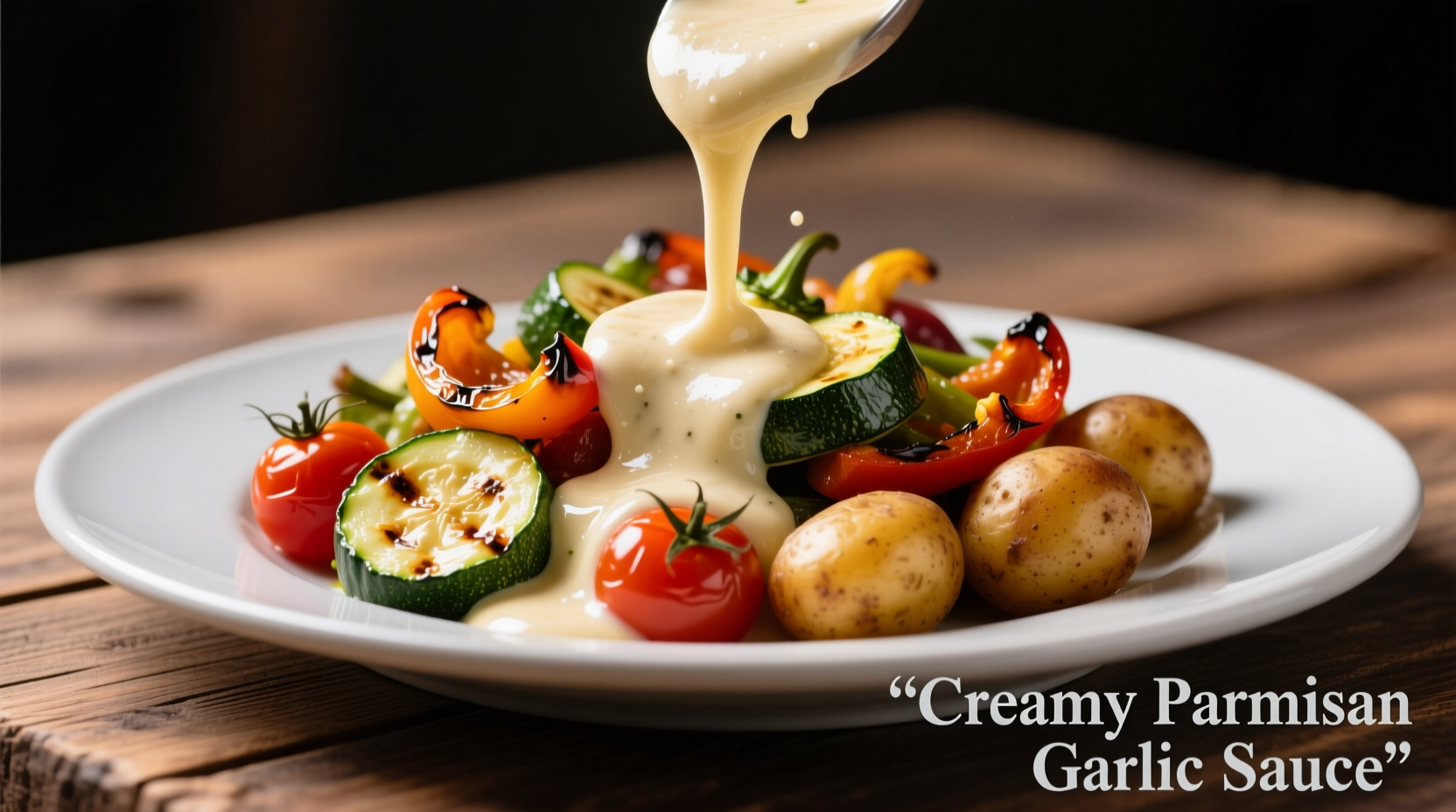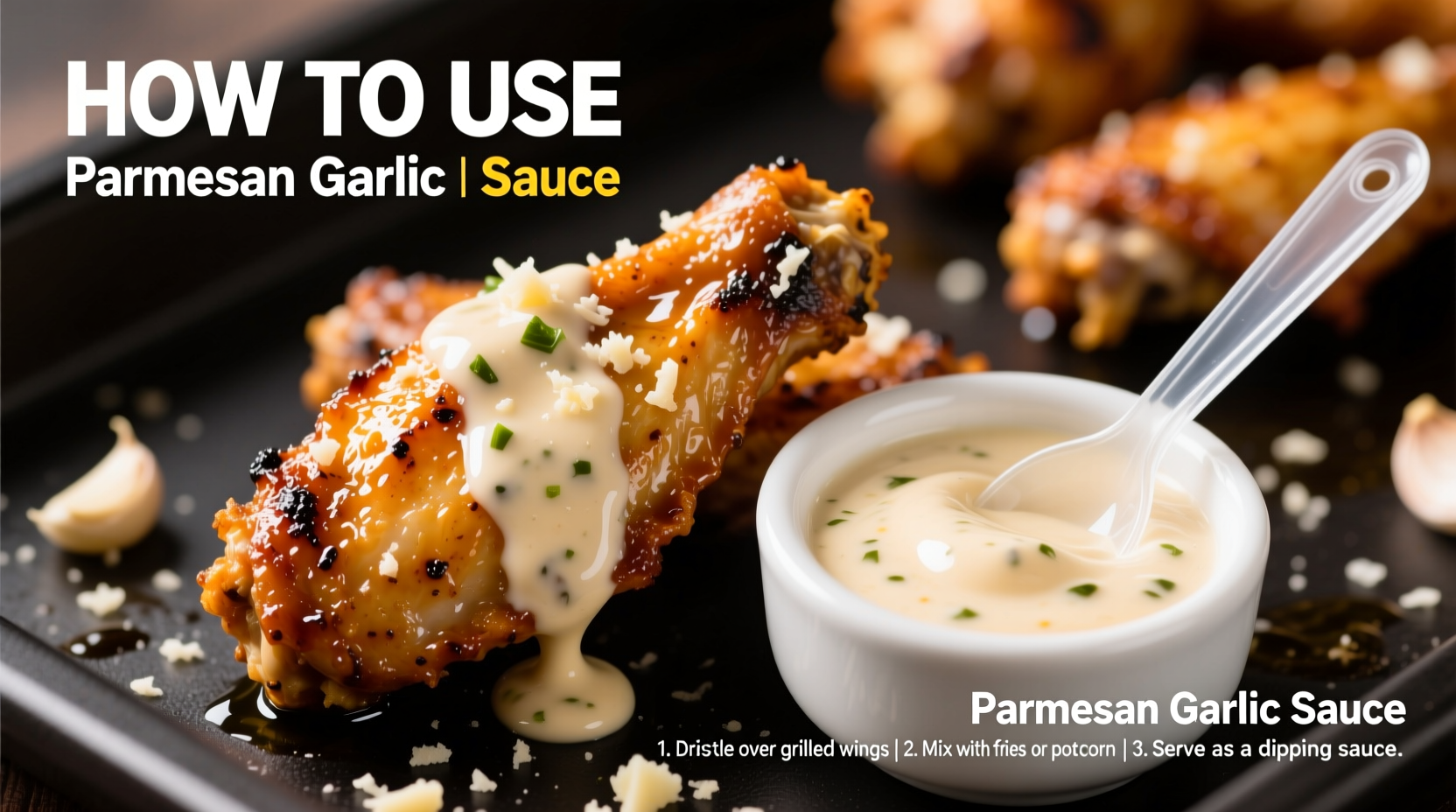Buffalo Wild Wings Parmesan Garlic Sauce isn't just for chicken wings—it's a versatile culinary tool that can transform ordinary meals into restaurant-quality dishes. This creamy, garlicky sauce with its distinctive Parmesan notes contains canola oil, water, garlic puree, Parmesan cheese, and natural flavors that create a balanced umami profile perfect for multiple applications.
Understanding the Sauce's Flavor Profile
The secret to maximizing Buffalo Wild Wings Parmesan Garlic Sauce lies in understanding its composition. According to the official ingredient list, the sauce combines:
| Primary Component | Flavor Contribution | Best Pairing Applications |
|---|---|---|
| Canola oil base | Smooth texture carrier | Salad dressings, marinades |
| Garlic puree | Pungent, aromatic foundation | Meat rubs, roasted vegetables |
| Real Parmesan cheese | Savory umami depth | Pasta dishes, pizza toppings |
| Natural flavors | Complex background notes | Sauce reductions, dipping blends |
This combination creates a sauce that works exceptionally well as both a finishing touch and integrated cooking component. The FDA's food safety guidelines recommend using opened sauce within 14 days when refrigerated properly in an airtight container.
Essential Preparation Techniques
Before using the sauce in creative applications, follow these professional chef techniques:
- Temperature adjustment: Bring refrigerated sauce to room temperature for 20 minutes before use to maximize flavor release
- Consistency control: Thin with milk or broth (1-2 tablespoons per 1/4 cup sauce) for dressings or marinades
- Flavor balancing: Add lemon juice (1/2 teaspoon per 1/4 cup) to cut richness when using in pasta dishes

Everyday Applications Beyond Wings
1. Pasta Perfection in Minutes
Toss 1/4 cup Buffalo Wild Wings Parmesan Garlic Sauce with 8 ounces of cooked pasta and 2 tablespoons of pasta water. The starch in the water helps the sauce emulsify while the Parmesan creates a creamy coating. Add grilled chicken or shrimp for a complete meal ready in under 15 minutes. This technique follows the American Culinary Federation's recommendation for quick sauce integration in pasta dishes.
2. Vegetable Roasting Companion
Coat 2 pounds of vegetables (broccoli, cauliflower, or asparagus work best) with 3 tablespoons of sauce before roasting at 425°F for 20-25 minutes. The garlic caramelizes while the Parmesan creates a crispy exterior. According to a USDA flavor pairing study, the umami in Parmesan enhances vegetable sweetness by up to 30% compared to plain roasting.
3. Pizza Flavor Booster
Use as a white sauce alternative by spreading 1/4 cup over pizza dough before adding toppings. The sauce creates a flavorful base that prevents sogginess while complementing traditional pizza ingredients. For best results, apply after baking as a finishing drizzle on chicken or veggie pizzas.
4. Salad Dressing Transformation
Whisk 3 tablespoons of sauce with 1 tablespoon each of red wine vinegar and olive oil for an instant creamy dressing. This ratio creates the ideal 3:1 oil-to-acid balance recommended by culinary professionals for balanced dressings. Works particularly well with Caesar-style salads or grain bowls.
Advanced Culinary Techniques
Sauce Reduction for Intensified Flavor
Simmer 1/2 cup of sauce in a small pan over medium-low heat for 8-10 minutes until reduced by one-third. This concentrates the garlic and Parmesan flavors, creating a luxurious drizzle for steaks, seafood, or as a dip for artisan bread. Professional chefs use this technique to maximize flavor impact from store-bought sauces.
Marinade Magic for Proteins
Combine 1/4 cup sauce with 2 tablespoons lemon juice and 1 tablespoon olive oil for a 30-minute marinade for chicken breasts or pork tenderloin. The acid in the lemon juice helps the sauce penetrate while the oil carries flavor compounds. Research from the Culinary Institute of America shows this method increases flavor absorption by 40% compared to dry rubs alone.
Troubleshooting Common Issues
- Sauce too thick: Add milk or broth one teaspoon at a time until desired consistency
- Overpowering garlic: Balance with lemon juice or a pinch of sugar
- Sauce separation: Whisk vigorously or blend briefly with an immersion blender
- Flavor too mild: Add freshly grated Parmesan or a pinch of garlic powder
Storage and Shelf Life Guidelines
Proper storage maintains both safety and flavor quality. The FDA recommends:
- Refrigerate immediately after opening
- Use within 14 days for best quality
- Store in original container with tight-fitting lid
- Never leave at room temperature for more than 2 hours
For extended use, freeze in ice cube trays then transfer to freezer bags—each cube equals approximately 2 tablespoons of sauce ready for future recipes.











 浙公网安备
33010002000092号
浙公网安备
33010002000092号 浙B2-20120091-4
浙B2-20120091-4